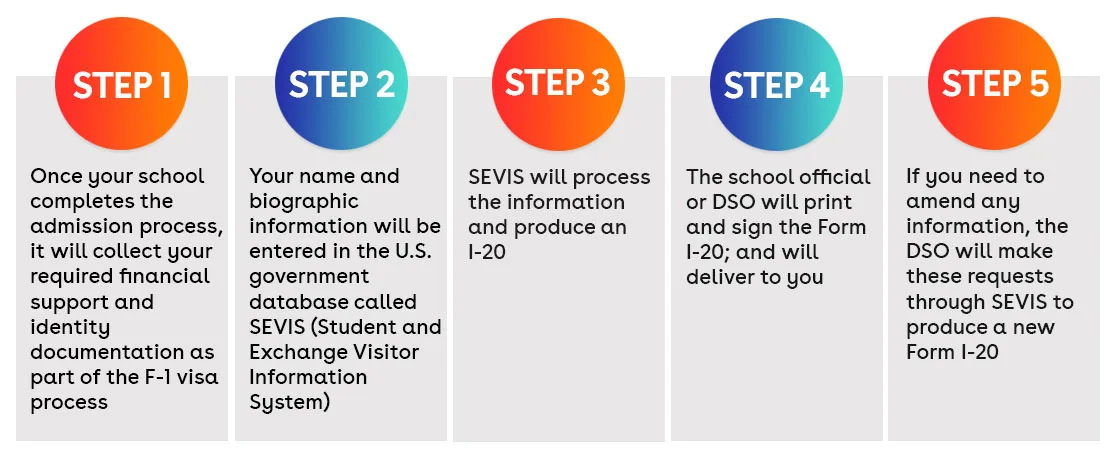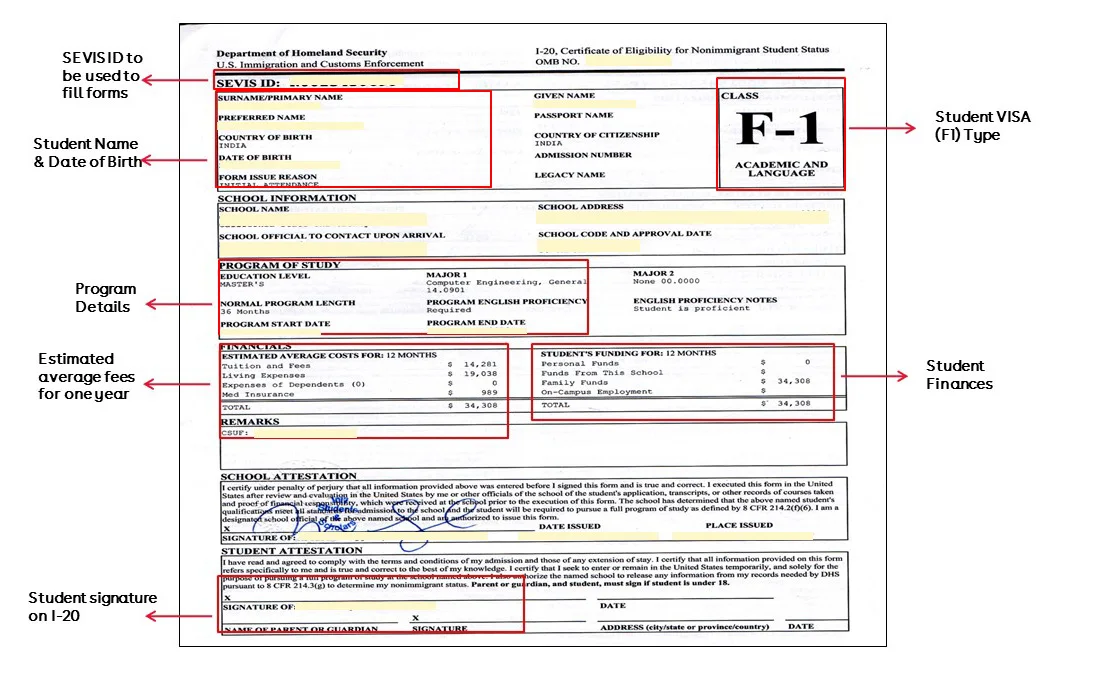- Berita & artikel
- Acara kami
- Kunjungi kamiIDP AustraliaIDP BahrainIDP BangladeshIDP CambodiaIDP CanadaIDP ChinaIDP EgyptIDP GhanaIDP Hong KongIDP IndiaIDP IranIDP JordanIDP KenyaIDP KoreaIDP KuwaitIDP LebanonIDP MalaysiaIDP MauritiusIDP Middle EastIDP NepalIDP New ZealandIDP NigeriaIDP OmanIDP PakistanIDP PhilippinesIDP Saudi ArabiaIDP SingaporeIDP Sri LankaIDP Taiwan, ChinaIDP ThailandIDP TurkeyIDP UAEIDP VietnamIDP Corporate
- Media sosial
- Bahasa Indonesia
Topik yang Dibahas
- 19 January 2025
A comprehensive guide to all your queries related to Form I-20
Indeed, it feels like an accomplishment to be accepted into your desired study program in the US and move one step closer towards your career goals. Once you’ve been accepted by your desired American institution, it’s time to work on your visa paperwork and the most important part of it is your Form I-20.
What is Form I-20?
Form I-20 is a multi-purpose document issued by a government-approved US educational institution to certify that you are admitted to a full-time study program and have also disclosed enough financial resources to stay in the States. This form is officially titled as the “Certificate of Eligibility” because it allows a student to apply for an F or M student visa at a US embassy or consulate abroad.
Do all students need Form I-20?
All F and M visa holders planning to study in the US need a Form I-20 or “Certificate of Eligibility for Non-immigrant Student Status.” Once you get accepted into a Student and Exchange Visitor Program (SEVP)-certified school, you’ll receive a Form I-20 from their Designated School Official (DSO), but you’ll have to procure a separate Form I-20 for any eligible dependents who may accompany you in the US.
The name (i.e., Academic and Language students vs. Vocational Students) on the Form I-20 issued by SEVP-certified school will dictate the type of student visa you’ll get from the U.S. Department of State
If you are under 18, you and your DSO both have to sign the form along with the signature of your parents on it
How is an I-20 created?
The I-20 form is created by a university or educational institution approved by the U.S. government. The school will use the SEVIS system to create and manage the I-20 forms.

How to apply for a non-immigrant visa?
Your Form I-20 bears your program start date. This implies that you are permitted to enter the country 30 days before the commencement of your program as per the mentioned date. You should know that F-1 and M-1 student visas can be issued up to 120 days in advance of your program start date. So, it is important to check if your student visa is in line with the type of Form I-20 you have (e.g., F-1 or M-1). Remember, when you appear for your visa interview, do carry your original Form I-20 with the application.
Note: There are limited circumstances under which the consular officer may accept a copy of the Form I-20.
What is the validity of your Form I-20?
The completion date on your Form I-20 depends on the major you have chosen and what level of education you are pursuing education at (under graduation or postgraduation). Besides, this is an estimate made by the university based on the time that you might take to fulfil all the degree requirements. Just in case, if you are not able to finish your program on the mentioned date, an extension can be requested from the university’s international office at least one month prior to the completion date.
It’s also important to note that the duration may vary as per study levels:
-
Undergraduate: The last day of final exams of the semester when the degree requirements are fulfilled
-
Graduate: If there is any research component in the degree, it will be the date when all degree requirements are fulfilled. If there is no research component (like in MBA), then it’s the last day of final exams of the semester when the degree requirements are fulfilled
Role of Form I-20 while applying for benefits
Your Form I-20 implies that you are legally enrolled in a study program in the US. Therefore, you might need it while you apply for the benefits available to F and M visa holders’ category. For instance, if you are eligible to apply for a driver’s license or a social security number, you’ll need to show your Form I-20.
This is how a regular Form I-20 looks like

How is your Form I-20 used?
Outside the US: After receiving your Form I-20 from the institution, you must apply for an F-1 visa at the embassy or consulate. You’ll need to present your F-1 visa with the Form I-20 to a U.S. Customs and Border Protection officer upon arrival at the U.S. airport.
Inside the US: Once you have arrived in the US and passed the border inspections process at the airport, seaport or land border, your Form I-20 will be used as an identification and proof of your legal and academic status. You will also have to show your I-20 at the Social Security Office and the Department of Motor Vehicles (DMV) and to employers during the hiring process for employment.
When do you need a new Form I-20?
The initial Form I-20 is fulfilling and doesn’t need to be changed unless:
-
The physical copy of the form is destroyed or misplaced.
-
There is any travel endorsement.
-
If there is a change in the SEVIS status (like from Initial to Active).
-
Any significant change in the mentioned information, such as any personal information, study program, optional practical training and other relatable details
Once your study program ends
Once you complete your study program, you’ll be allowed a 60-day grace period to either depart from the US, request a school transfer or change the visa status.
Note: If you are interested in working in the US after your program completes, then you must apply for an Optional Practical Training (OPT) work authorisation before the expiration of your 60-day grace period.
Frequently Asked Questions
Q1: What if I lose my Form I-20?
A: In such a case, contact your university’s office for a replacement I-20 and if you are outside the US, then obtain the replacement I-20 before entering the country to resume your studies. Keep enough time in hand for processing and courier.
Q2: Should I keep all copies of my Form I-20s?
A: It’s good to keep different versions of your I-20s while you are in the US. If there are any changes to your program or other information, then record all the copies for future reference. But, always use the recent one for travel, work, or other purposes.
It’s important to remember that your Form I-20 is a significant document that should be kept safe, as you’ll need it throughout your international study life cycle in the US.
Satu akun untuk semua kebutuhan studi Anda di luar negeri
Buat profil Anda dan buka beragam fitur termasuk rekomendasi yang dipersonalisasi, aplikasi yang dilacak dengan cepat, dan masih banyak lagi.
Search for articles
Dive into our extensive collection of articles by using our comprehensive topic search tool.











